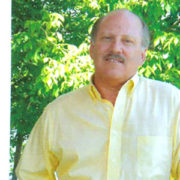Sansavilla Conserved!
Protection of the lower Altamaha River began in 1968, piece by piece. The pace accelerated in the last twelve years as federal and state agencies collaborated with non-profits and private philanthropy, investing more than $90 million to underwrite conservation easements and outright purchases. The “missing piece,” a 19,500 acre property known as Sansavilla featuring 12 miles of Altamaha River frontage, is finally secure. A host of partners made it possible using a phased approach: The Conservation Fund, The Nature Conservancy of Georgia, Georgia Department of Natural Resources, U.S. Fish & Wildlife Service, U.S. Forest Service, and the Department of Defense. Private philanthropy played a critical role with leadership from the Robert W. Woodruff Foundation and the Knobloch Family Foundation. A ribbon cutting was held on October 16 to mark the closing of the final phase.
First as a footpath and then as a ferry landing, for centuries Sansavilla Bluff has been a waypoint for people crossing the immense Altamaha River floodplain. Now the Bluff serves as the linchpin in a decades-long effort to safeguard and restore the lower Altamaha.
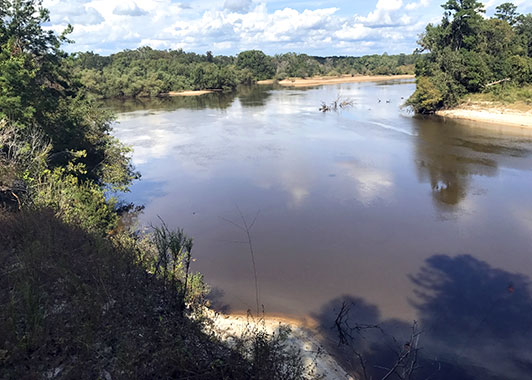 At Sansavilla, slash and loblolly “pines in lines” are being cut or thinned to restore the once-dominant longleaf pine forest and its understory plants. With prescribed burns every few years to control competing vegetation, the rich plant diversity will support greater numbers of a wide variety of wildlife, including the gopher tortoise.
At Sansavilla, slash and loblolly “pines in lines” are being cut or thinned to restore the once-dominant longleaf pine forest and its understory plants. With prescribed burns every few years to control competing vegetation, the rich plant diversity will support greater numbers of a wide variety of wildlife, including the gopher tortoise.
As a keystone species — one whose presence in the landscape enables other plants and animals to thrive — tortoises excavating burrows for their own living quarters draw as many as 350 species of animal “tenants,” from tiny mites to indigo snakes and burrowing owls. As testimony that Sansavilla is prime tortoise habitat, 400 tortoises already make their home there. Now the tract also will serve as a refuge for tortoises relocated from construction and mining sites elsewhere within their range. Ultimately, conservation biologists expect up to 1000 residents when restoration is complete.
While few of us will live to see the longleaf seedlings at Sansavilla Bluff reach their old-growth majesty, conservation success stories are happening right before our eyes along the Altamaha. A unique collaboration focused on conserving and restoring this historic landscape will benefit generations of Georgians yet to come.
For more information about the Gopher Tortoise Initiative and the crucial role tortoises play in the native longleaf pine and sandhill ecosystems, please see “The Gopher Tortoise: A Catalyst for Conservation,” in the previous issue of Shoreline.
Ribbon cutting photo by Lance Cpl. Moreno; Sansavilla Bluff photo by Scott Coleman.

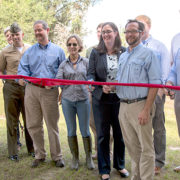
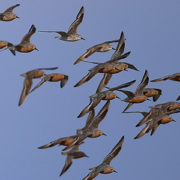
 Georgia’s barrier islands are owned and managed by a diverse group of private and public entities, many of which have committed to the WHSRN designation. The Georgia Shorebird Alliance (GSA), a collaborative group of biologists, land managers, and organizations devoted to the protection of Georgia’s shorebirds, submitted the nomination. Commitment to the nomination comes from GSA members, including the National Parks Service (Cumberland Island National Seashore, Fort Pulaski National Monument), U.S. Fish and Wildlife Service (Savannah Coastal Refuges Complex), and the privately-owned Little Cumberland Island, St. Catherine’s Island, Little St. Simons Island, and the Cannon’s Point Preserve and Musgrove Preserve on St. Simons Island. The Landscape of Hemispheric Importance also includes the Altamaha River Delta, previously designated in 1999 by WHSRN as a Site of Regional Importance.
Georgia’s barrier islands are owned and managed by a diverse group of private and public entities, many of which have committed to the WHSRN designation. The Georgia Shorebird Alliance (GSA), a collaborative group of biologists, land managers, and organizations devoted to the protection of Georgia’s shorebirds, submitted the nomination. Commitment to the nomination comes from GSA members, including the National Parks Service (Cumberland Island National Seashore, Fort Pulaski National Monument), U.S. Fish and Wildlife Service (Savannah Coastal Refuges Complex), and the privately-owned Little Cumberland Island, St. Catherine’s Island, Little St. Simons Island, and the Cannon’s Point Preserve and Musgrove Preserve on St. Simons Island. The Landscape of Hemispheric Importance also includes the Altamaha River Delta, previously designated in 1999 by WHSRN as a Site of Regional Importance.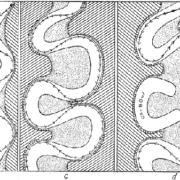
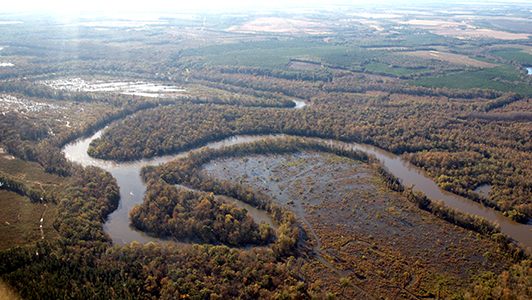 The Savannah River’s water quality has been especially challenged by post-war population growth and industrial development in the Savannah Valley. The river now receives waste discharges from forty-eight industrial sites and municipalities along one hundred-mile stretch, ranking it third on the list for toxic loads in Georgia rivers. Poor water quality affects fish and other aquatic organisms, increases water treatment costs for industry and cities, and impairs the public’s ability to enjoy a wide variety of recreation on the river.
The Savannah River’s water quality has been especially challenged by post-war population growth and industrial development in the Savannah Valley. The river now receives waste discharges from forty-eight industrial sites and municipalities along one hundred-mile stretch, ranking it third on the list for toxic loads in Georgia rivers. Poor water quality affects fish and other aquatic organisms, increases water treatment costs for industry and cities, and impairs the public’s ability to enjoy a wide variety of recreation on the river.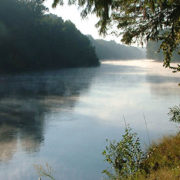
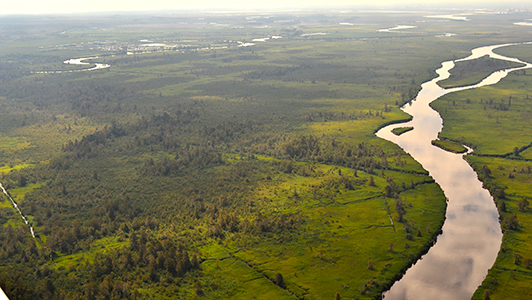 Using maps generated by The Nature Conservancy, SRCWF has targeted 210,000 acres in the watershed as critical priorities for maintaining water quality, with a goal of protecting 8,000 acres annually. The estimated cost over the life of the project is $52 million. Unlike South Carolina, Georgia has no state conservation fund providing financial incentives for landowners to place their land under conservation easements or otherwise enhance protection for these critical acres. As such, donors will play a critical role.
Using maps generated by The Nature Conservancy, SRCWF has targeted 210,000 acres in the watershed as critical priorities for maintaining water quality, with a goal of protecting 8,000 acres annually. The estimated cost over the life of the project is $52 million. Unlike South Carolina, Georgia has no state conservation fund providing financial incentives for landowners to place their land under conservation easements or otherwise enhance protection for these critical acres. As such, donors will play a critical role.